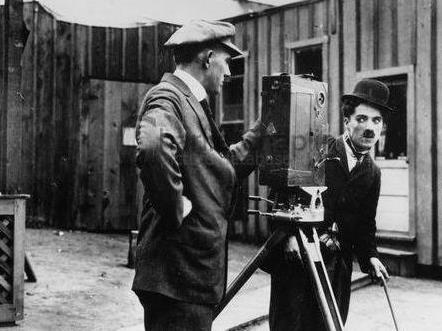Image via Charlie Chaplin website
In this centenary year of Gallipoli the networks are counting on big ratings for a rash of new films on a tired theme. We have previously argued that the Australian obsession with Gallipoli is an unsatisfactory way to portray the experience of World War I and a failure to produce original creative responses to the anniversary.
A newly-announced exhibition is the kind of creative alternative that tells a bigger story, providing a place to examine the value of the arts not just in remembering but also in experiencing the war years.
To commemorate the centenary of World War I, the Australian Centre for the Moving Image (ACMI) and the National Film and Sound Archive of Australia (NFSA) have pooled resources to present an exhibition looking at the way Australian experienced the war at the movies.
War Pictures: Australians at the Cinema 1914-1918 will recreate an early 20th century ‘picture palace’ and show extracts from the films Australians saw when they went to the cinema during the First World War era.
Many of these films are not about the war. They include newsreels, images of Australian troops and first Gallipoli film The Hero of the Dardanelles (1915), shot at Sydney’s Tamarama Beach only a few months after the actual event.
But the arts experience of the war years was primarily one of escapism: home-grown comedies, Hollywood dramas, serials and romances and a seemingly-endless supply of Charlie Chaplin films. (Chaplin made his first film in 1914. By the time the War ended four years later, he had more than 50 in the pocket of his baggy pants.)
Between 1914 and 1918, Hollywood boomed, in part because Europe was not in a position to make films but also because cinema attendance was robust. Audiences wanted to watch newsreels but they also needed to forget about the war for a couple of hours.
‘There was almost schizophrenic split in cinema at the time,’ said Fiona Trigg, curator of War Pictures. ‘It was the place where audiences could go to see the most intimate and real images of the war, but it was also the place they went to get away from the war.’
Trigg said early in the War, dramatic patriotic films were popular. ‘But as the war went on people became tired of that, disillusioned with the glib patriotic tellings of the glorious stories of war because they knew it wasn’t like that.’
Popular instead were serials like The Perils of Pauline, with a damsel in distress and a cliffhanger ending that brought audiences back the following week.
Epic classics like D.W. Griffith’s controversial Civil War story The Birth of a Nation and the Italian-made Roman epic Cabiria indulged audiences with dramatic editing and lavish costumes and sets. Home-grown bush comedies like Hayseeds and The Waybacks provided escapist comedy.
Artists tend to use the word escapism with the modifier ‘mere’, demeaning work that meets emotional needs without more complex goals.
But ‘escapism’ need not be a dirty word. It has been widely acknowledge since Freud that fantasy is a normal and emotional healthy outlet for all people.
Fantasy writer and philosopher C.S. Lewis challenged the dismal view of escapism when he remarked that the usual enemies of escape are jailers.
Trigg said escapism was a positive concept to her. ‘Going to the cinema or reading a novel or going to the theatre – you can call it escapism or you can call it a nurturing part of life. It’s a place where people work out about society and relationships.’
Of course, the arts are often a means to confront the most difficult parts of our lives but when life is dark the provision of an alternative reality can be essential to psychological health. The cinema was an essential part of the war experience for the families of soldiers abroad, for returning soldiers and for a society dealing with the resultant trauma.
Remembering the war, also means remembering the art it spawned and the way that art helped people escape the dark years.
War Pictures: Australians at the Cinema 1914-1918.
Australian Centre for the Moving Image, Melbourne
10 March – 12 July 2015
